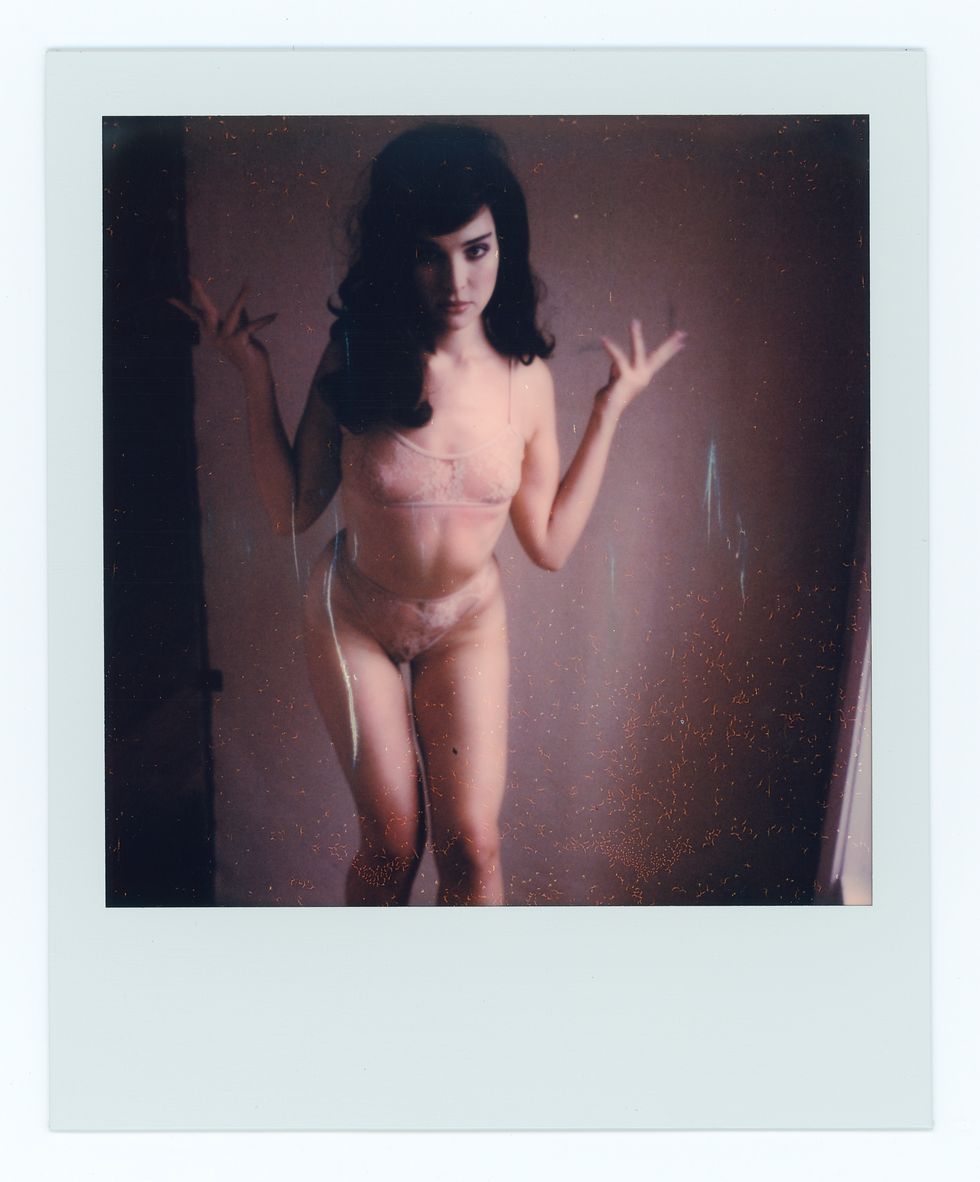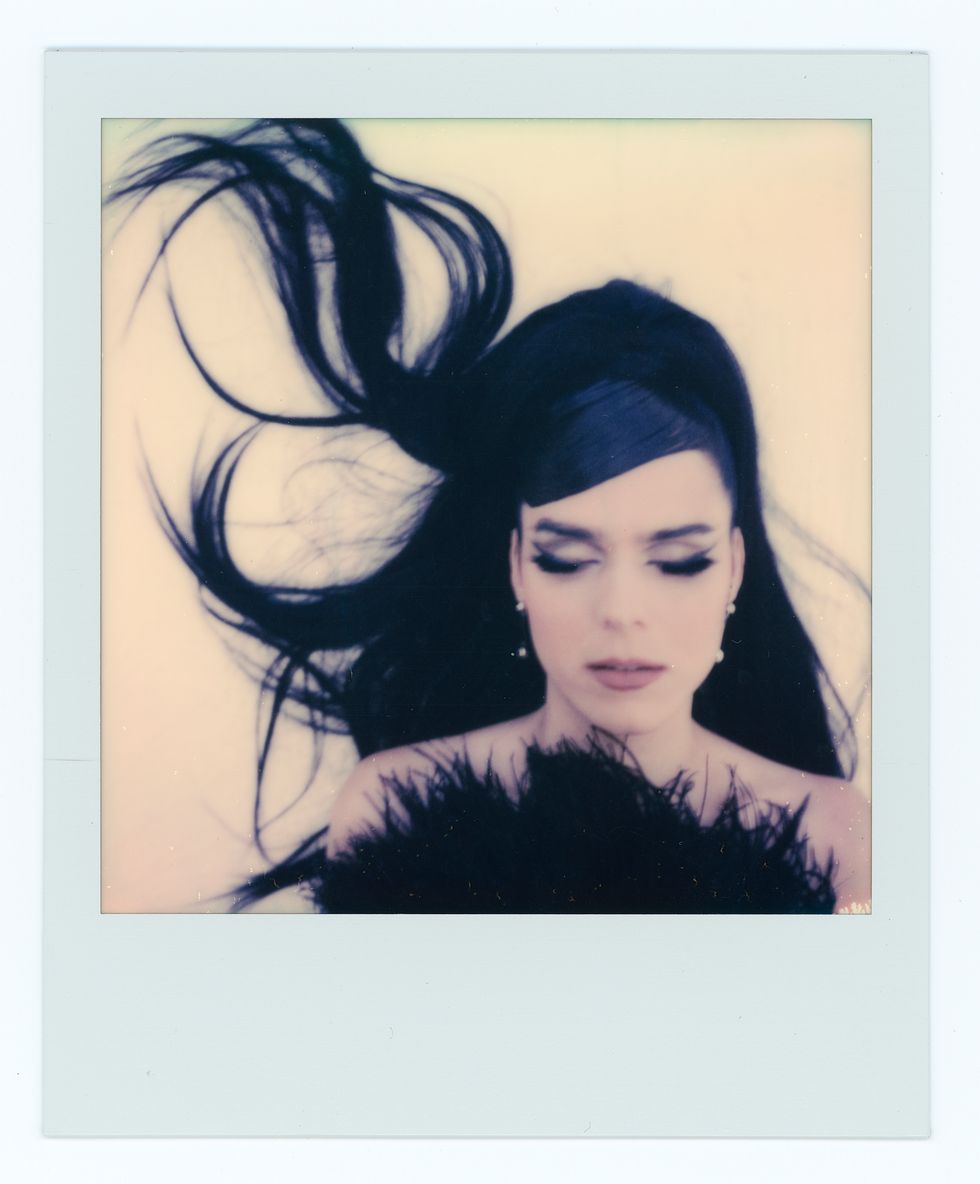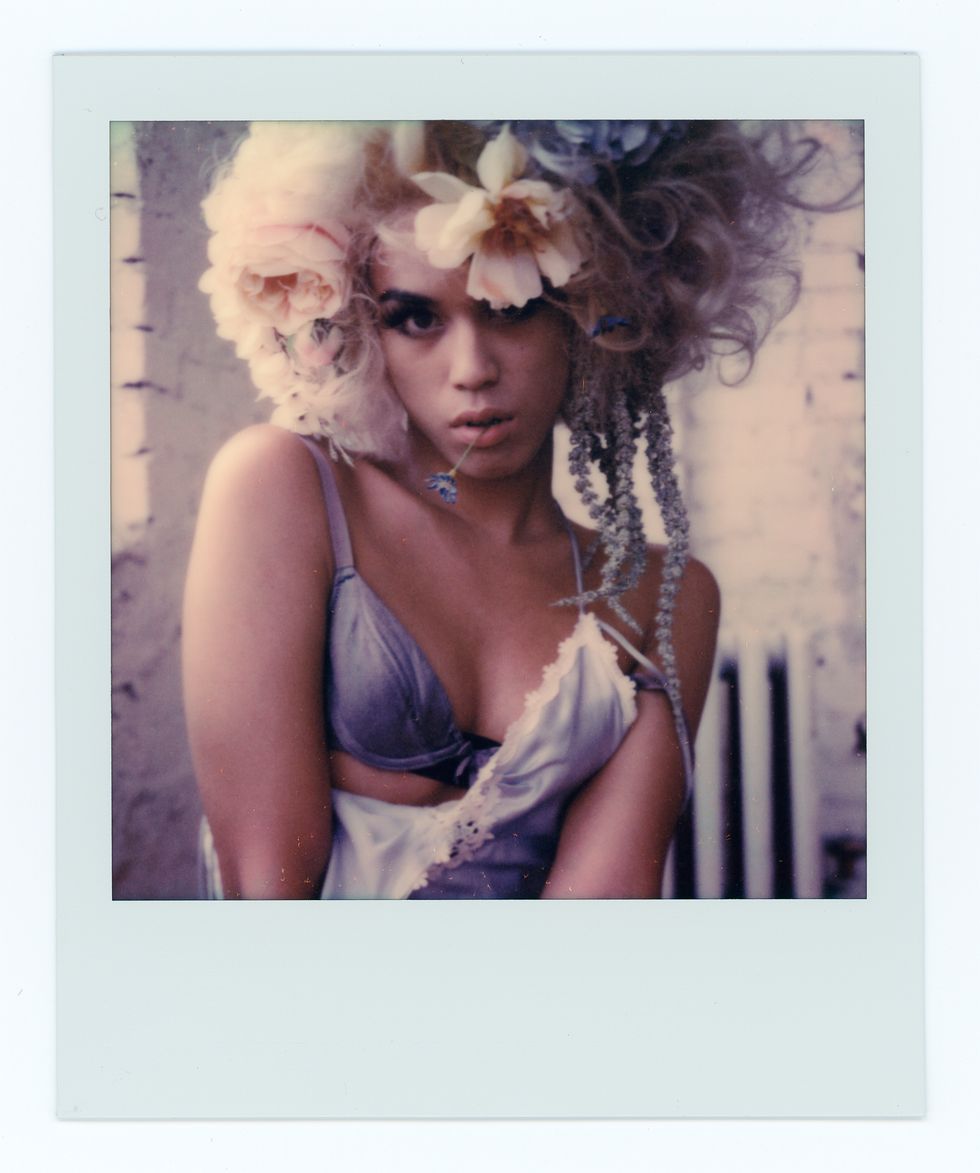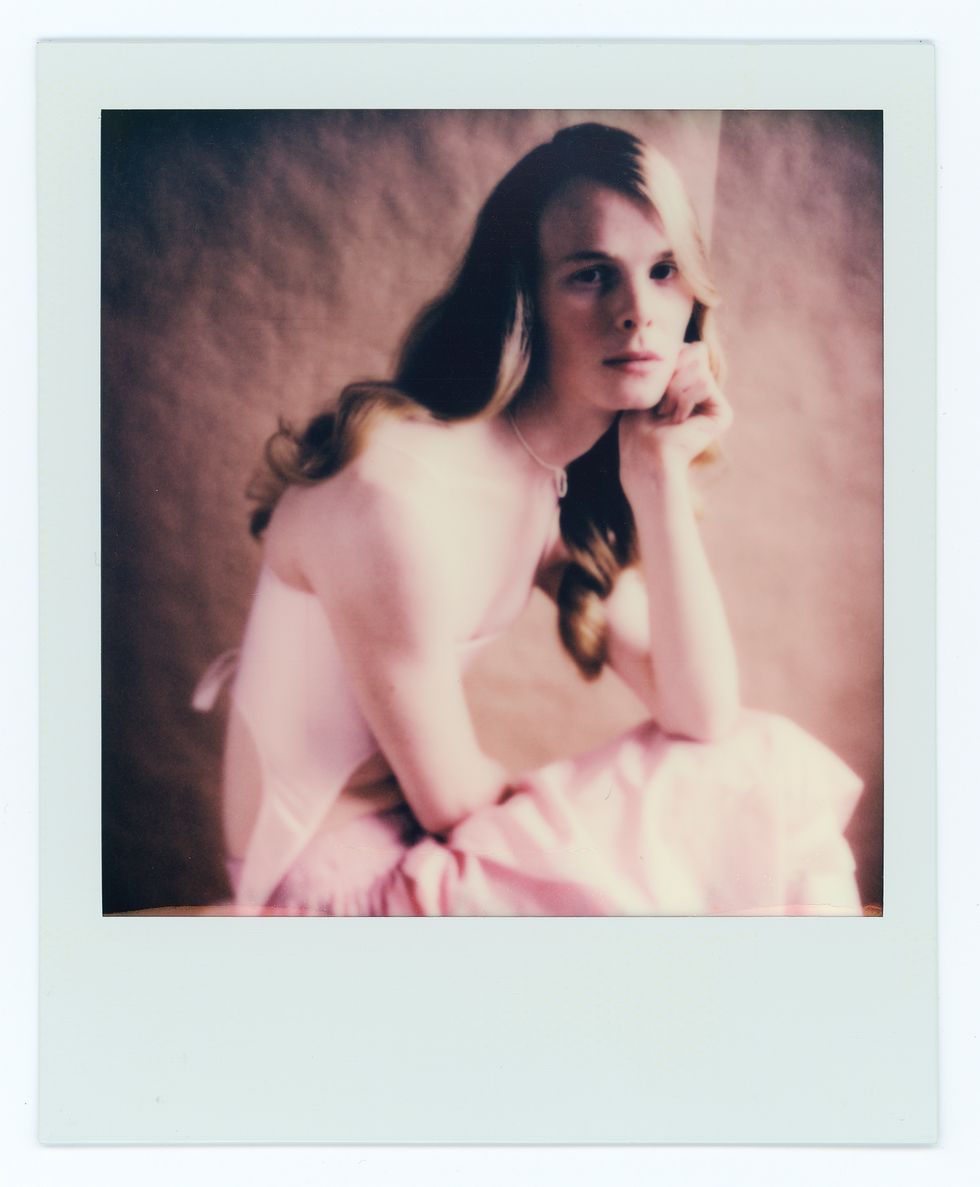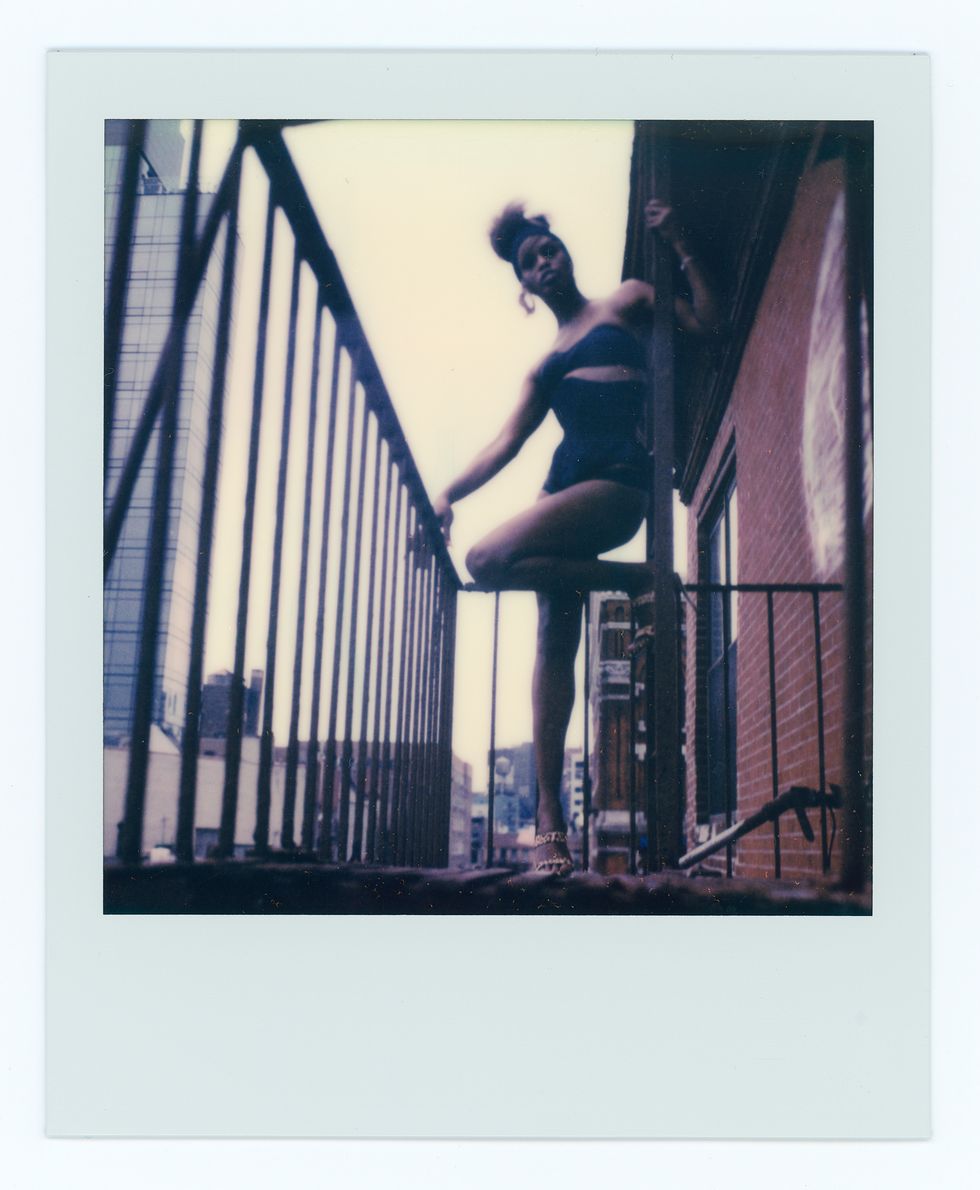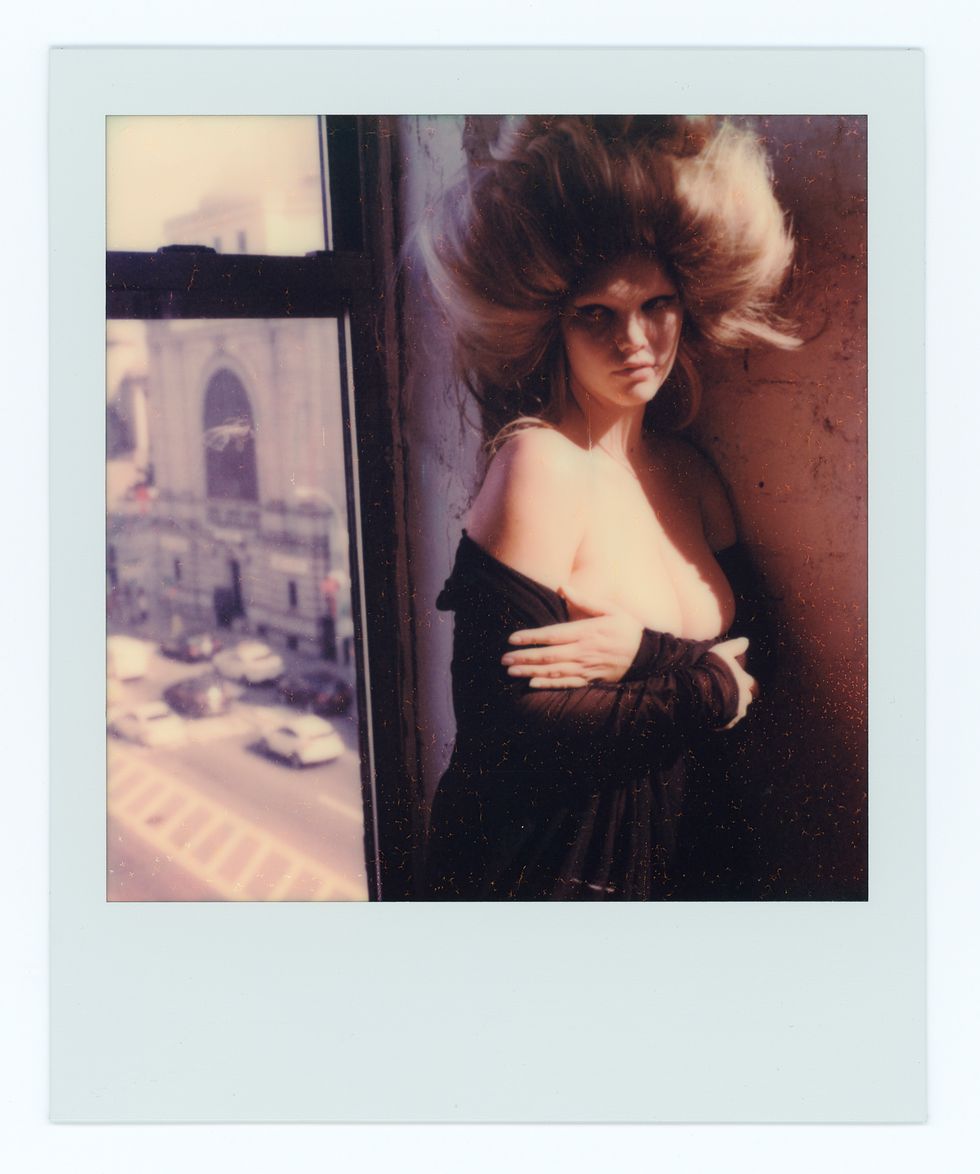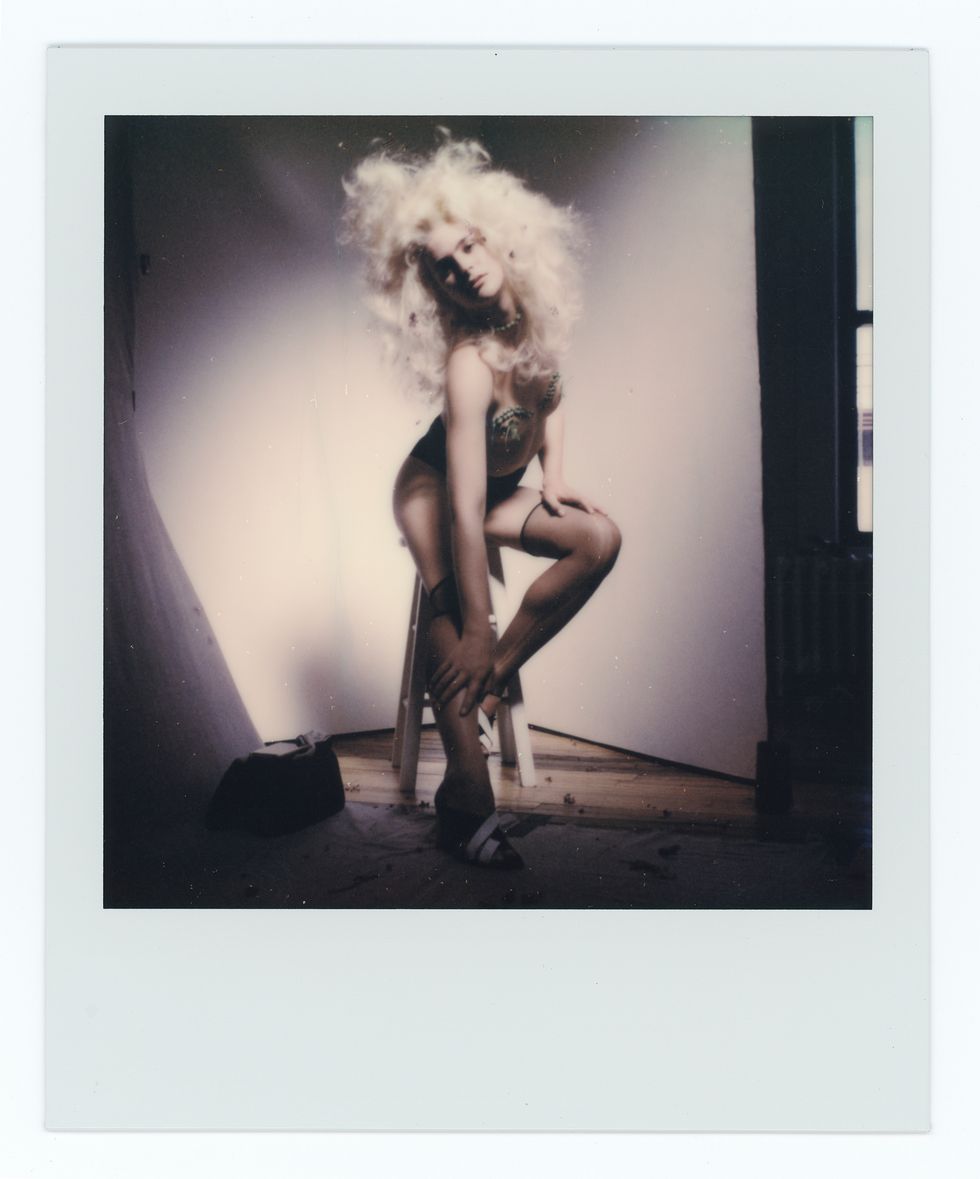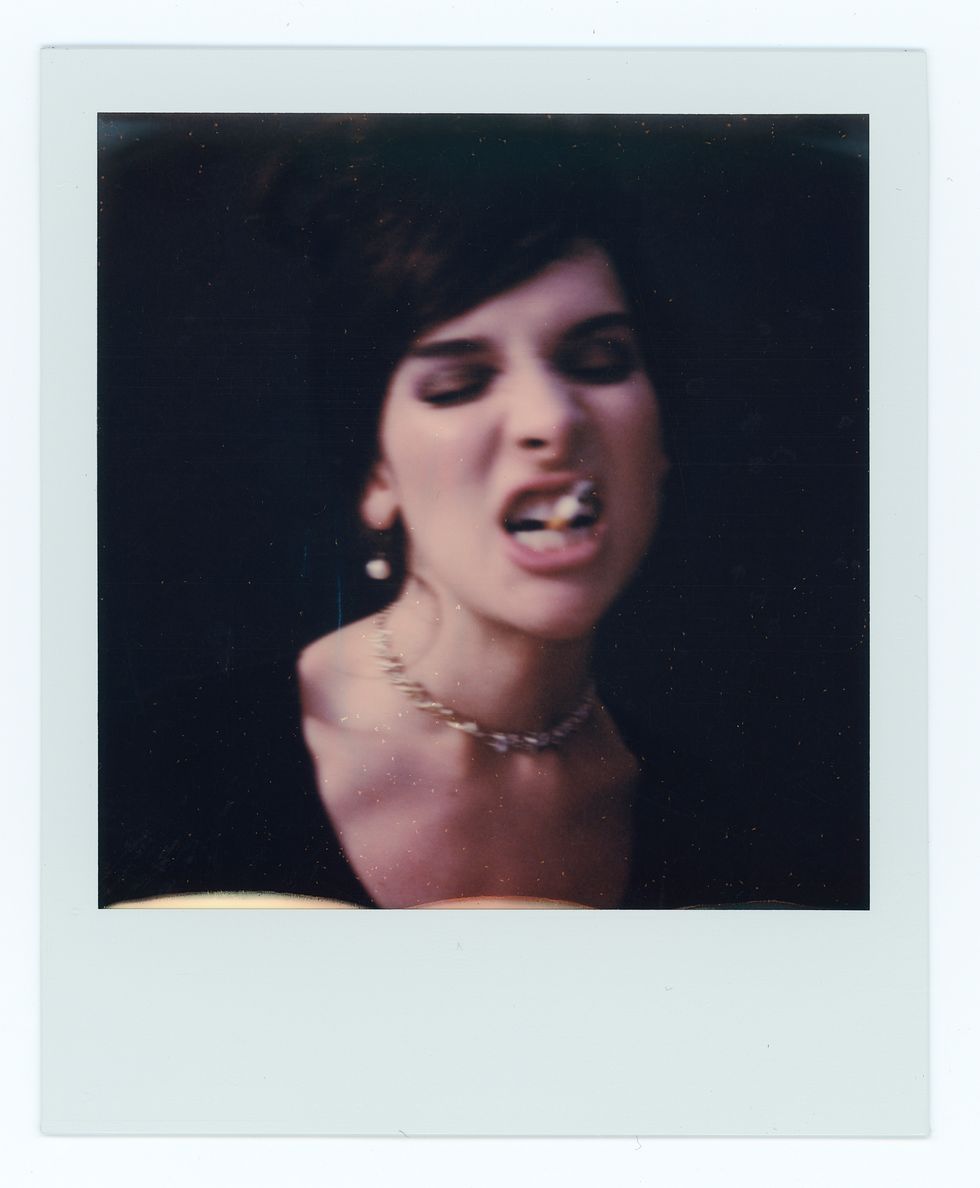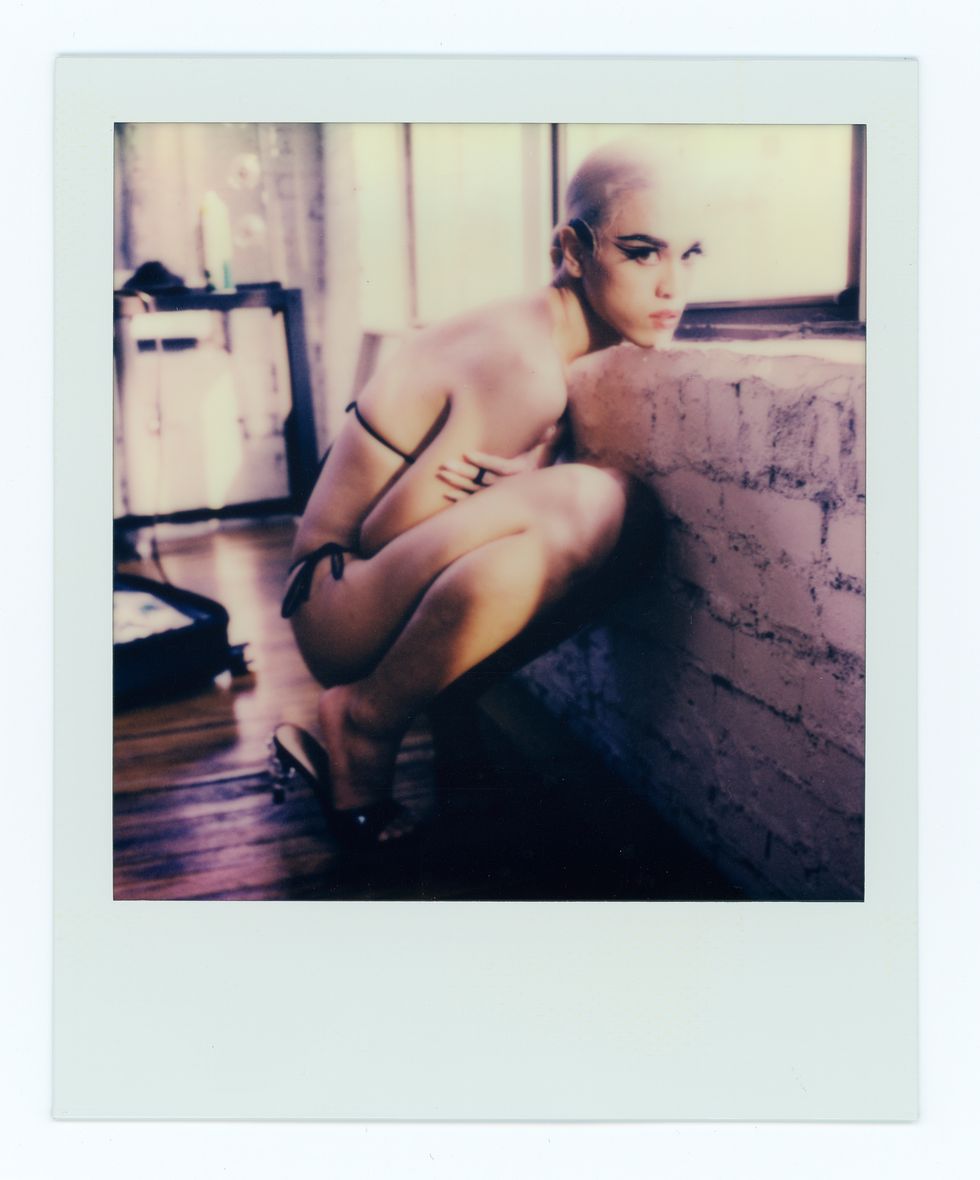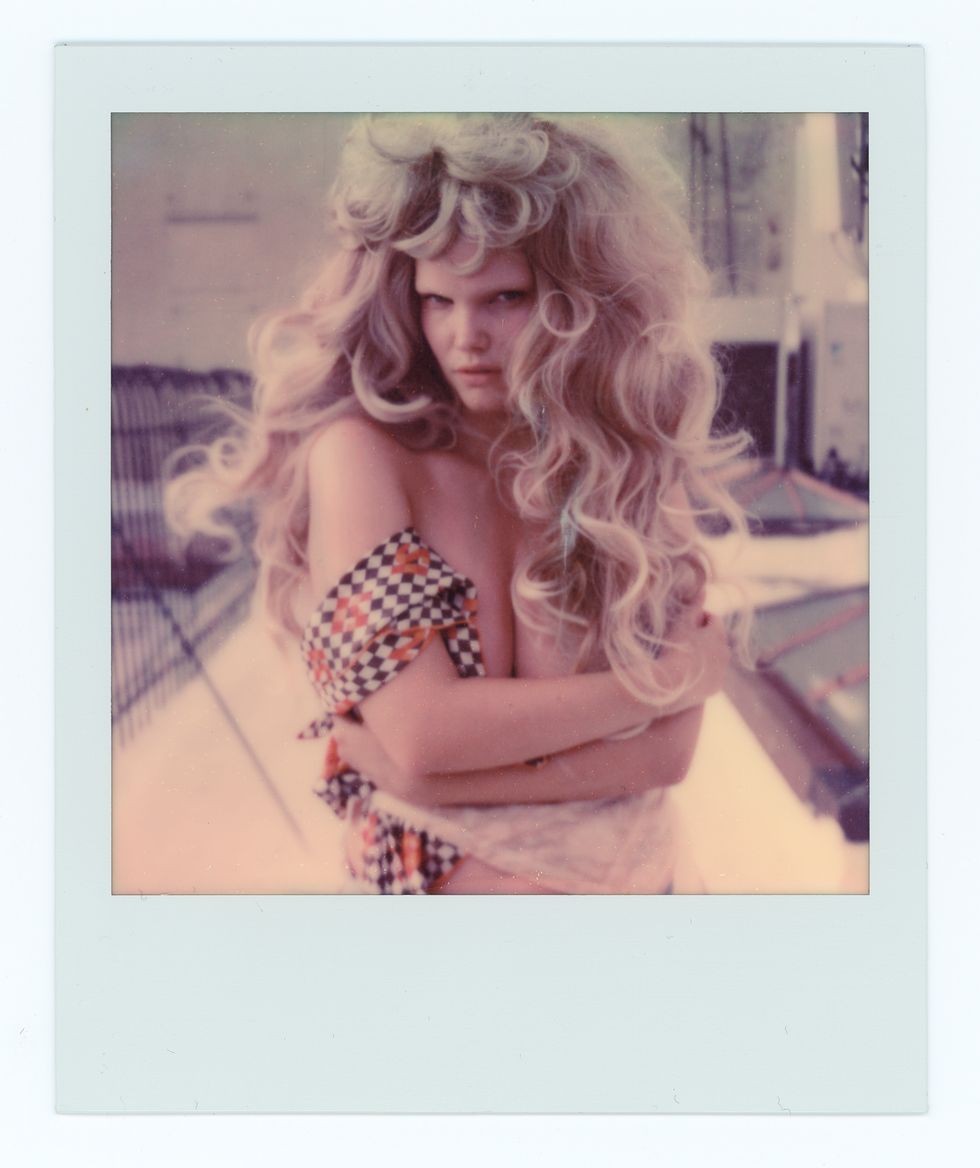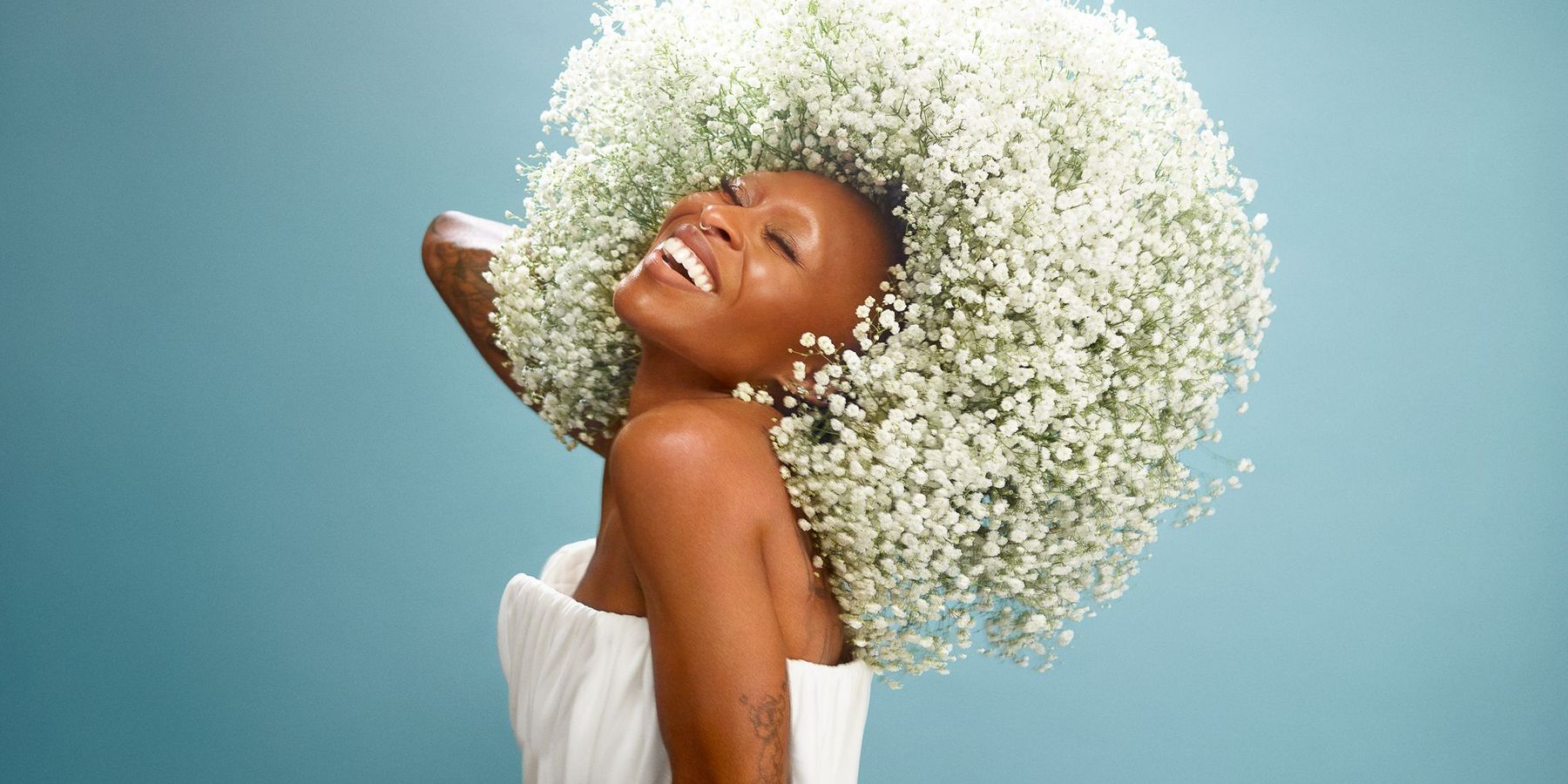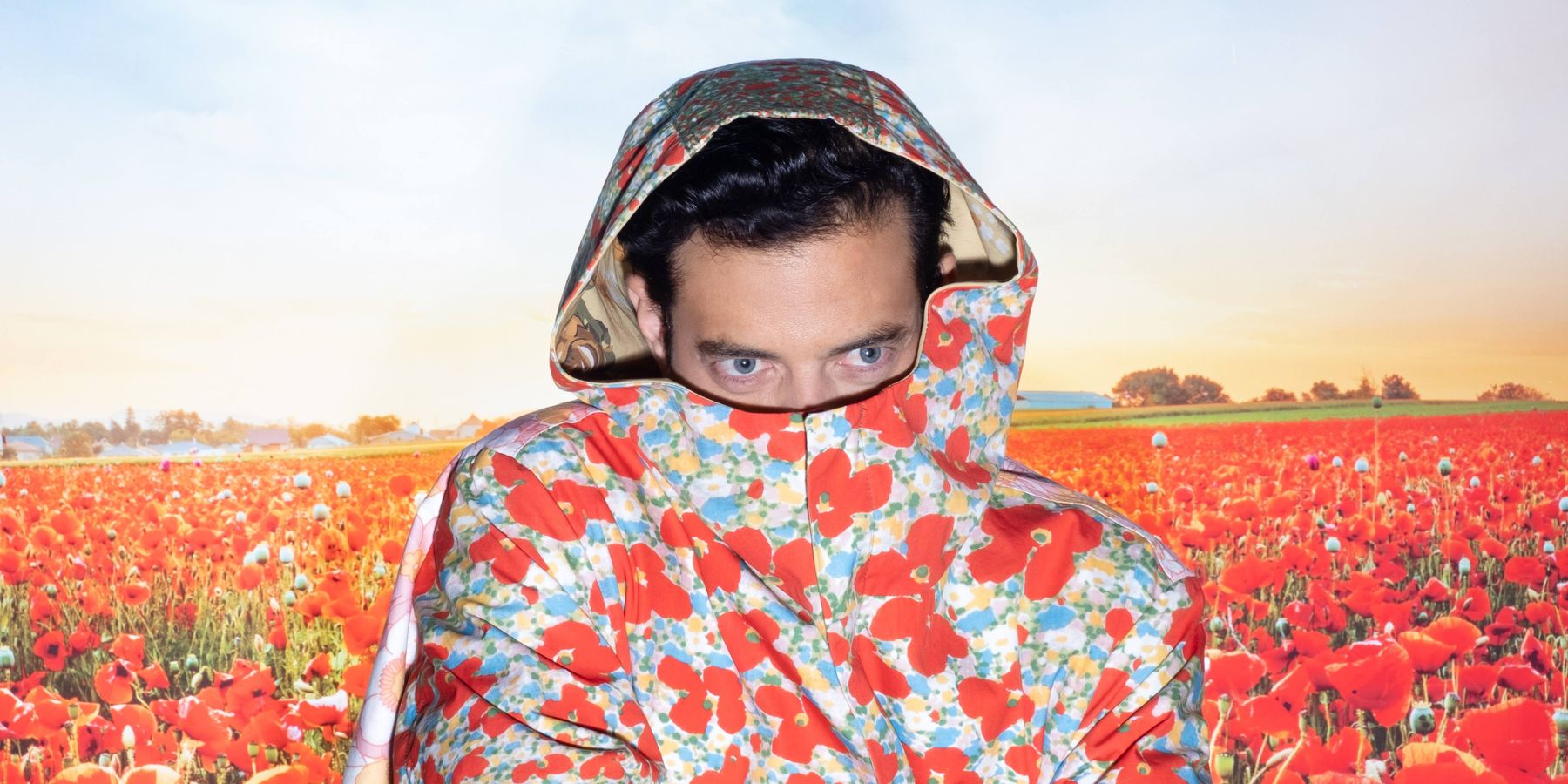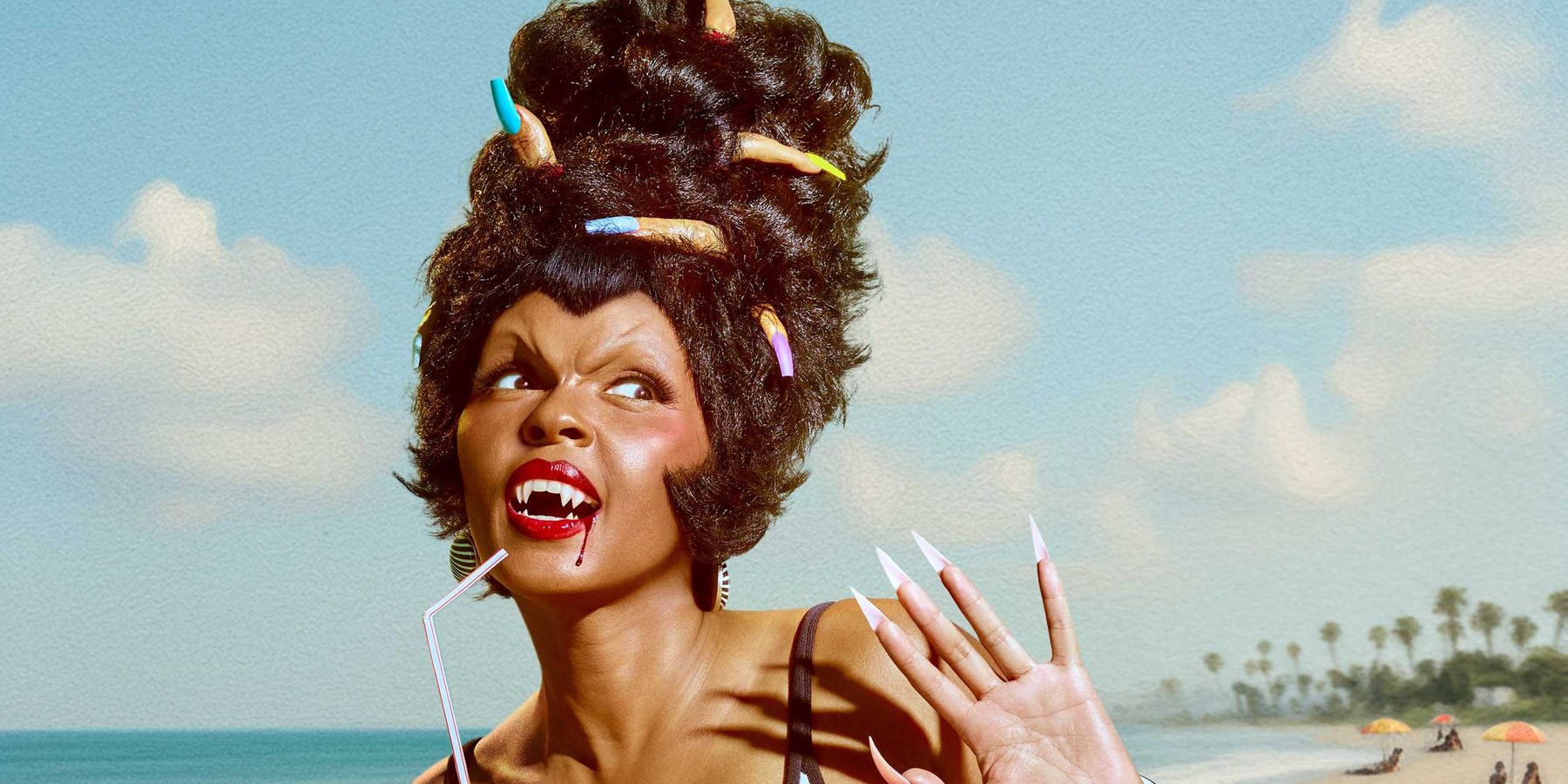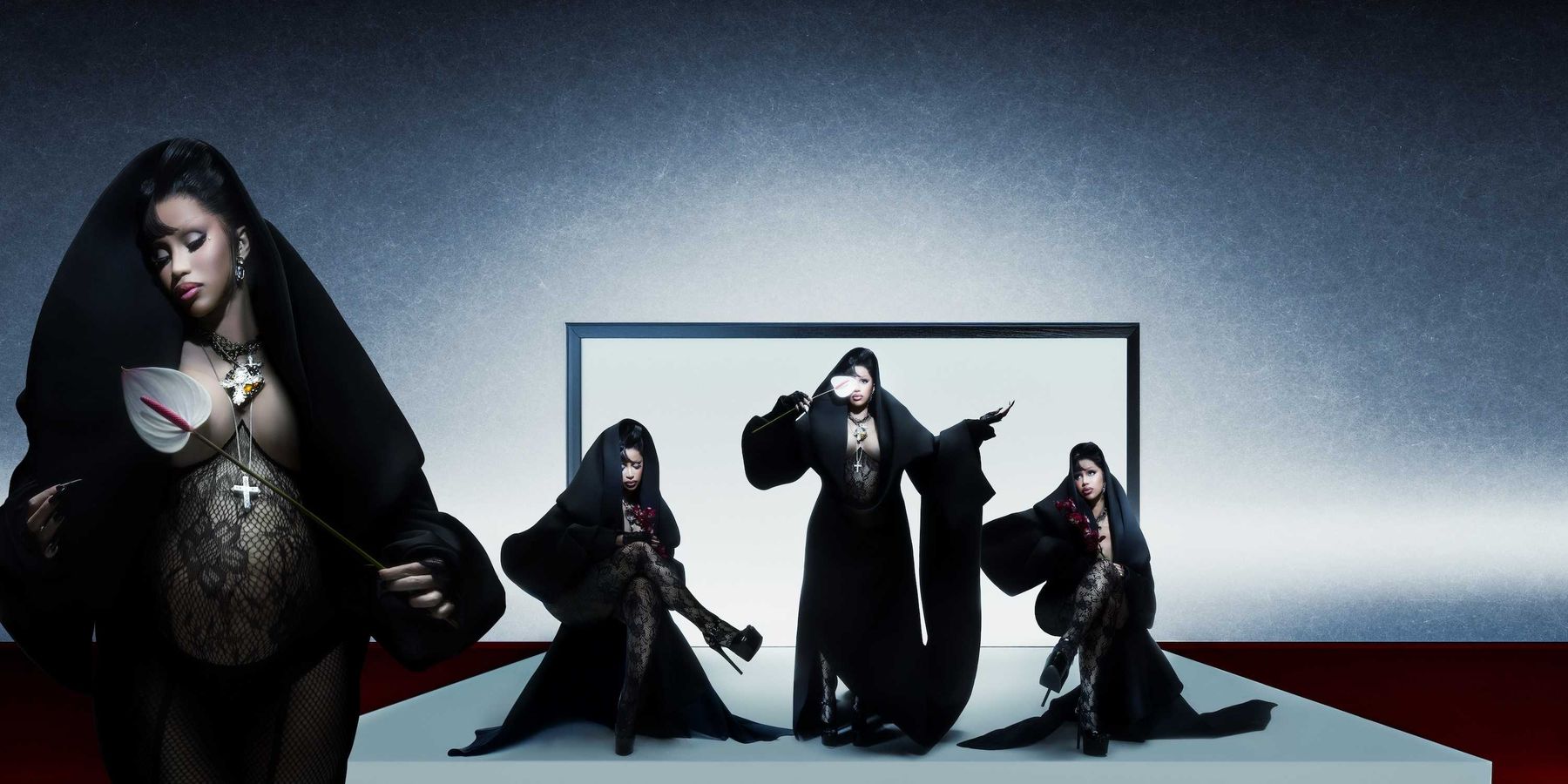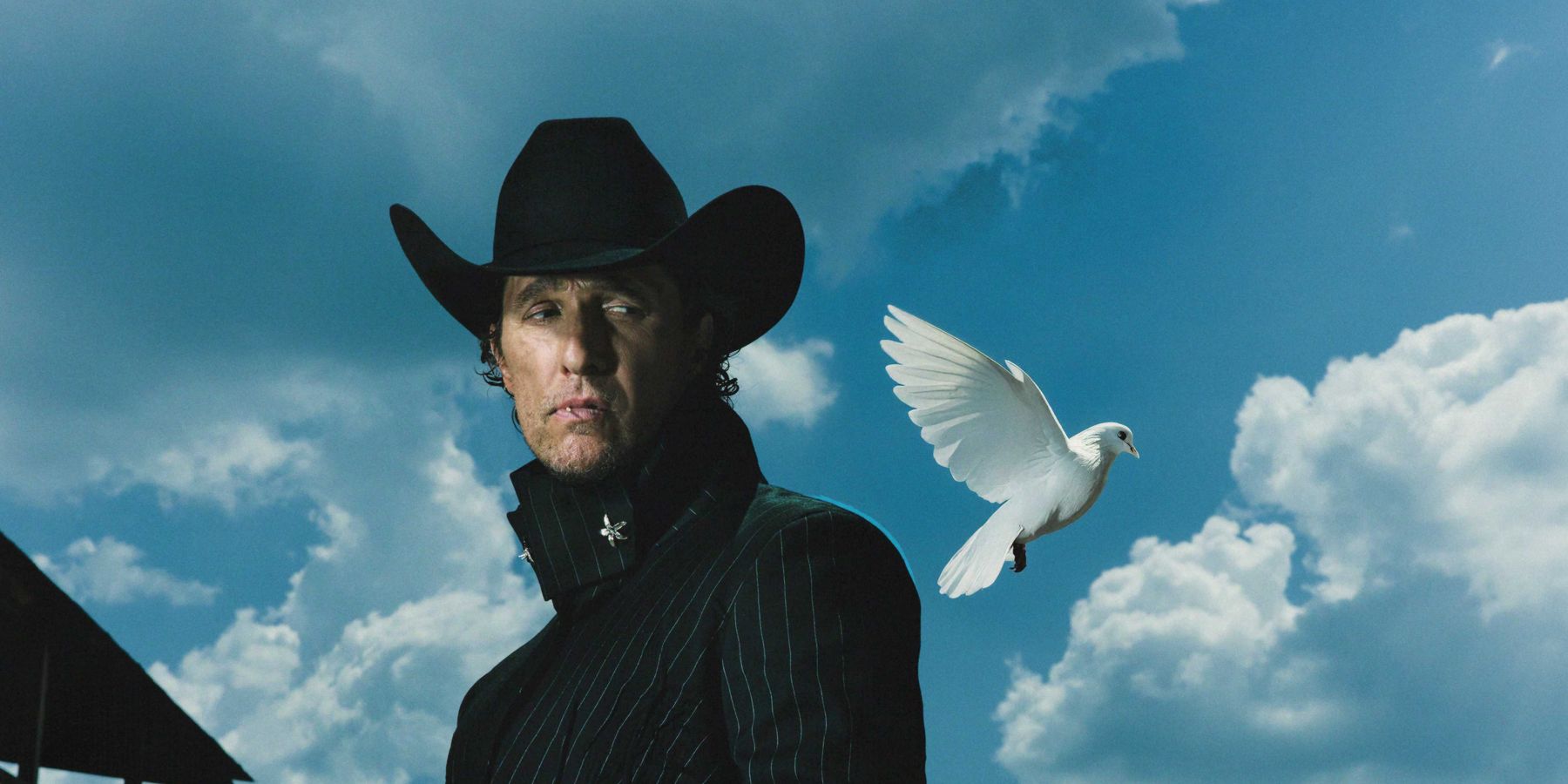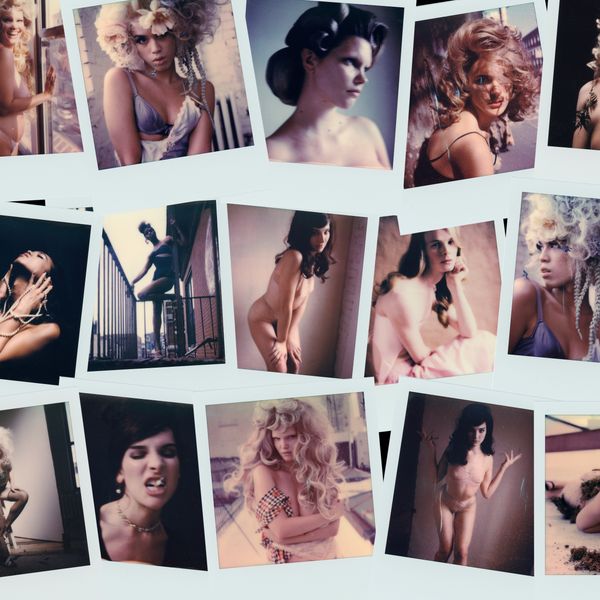
Ethan James Green Detonates a Whole New Kind of 'Bombshell'
By Harry Tafoya
Mar 12, 2025The original blonde bombshell wasn’t Marilyn Monroe, but Jean Harlow. In a miracle of hairstyling, the actress dyed her naturally ash blonde tresses platinum and catapulted herself into overnight stardom. A $10,000 reward for any stylist who could replicate the look went unclaimed, while scores of young women suffered chemical burns to their scalps after trying to recreate it for themselves. Despite rumors that bleaching her hair had caused her premature death, Harlow’s lasting legacy is the promise and fantasy of instant glamor. It’s simple: change your hair, revolutionize your life.
Ethan James Green’s subjects are already incredibly glamorous. They are recognizable fixtures onscreen and in fashion magazines, a segment of New York’s creative class whose commitment to operating the dream machine is obvious, in part, because of how casually stunning they are. The photographer specializes in taking portraits of image-makers before they’ve fully composed themselves: setting up situations where they can build out a new look, character or archetype together in low-stakes moments of discovery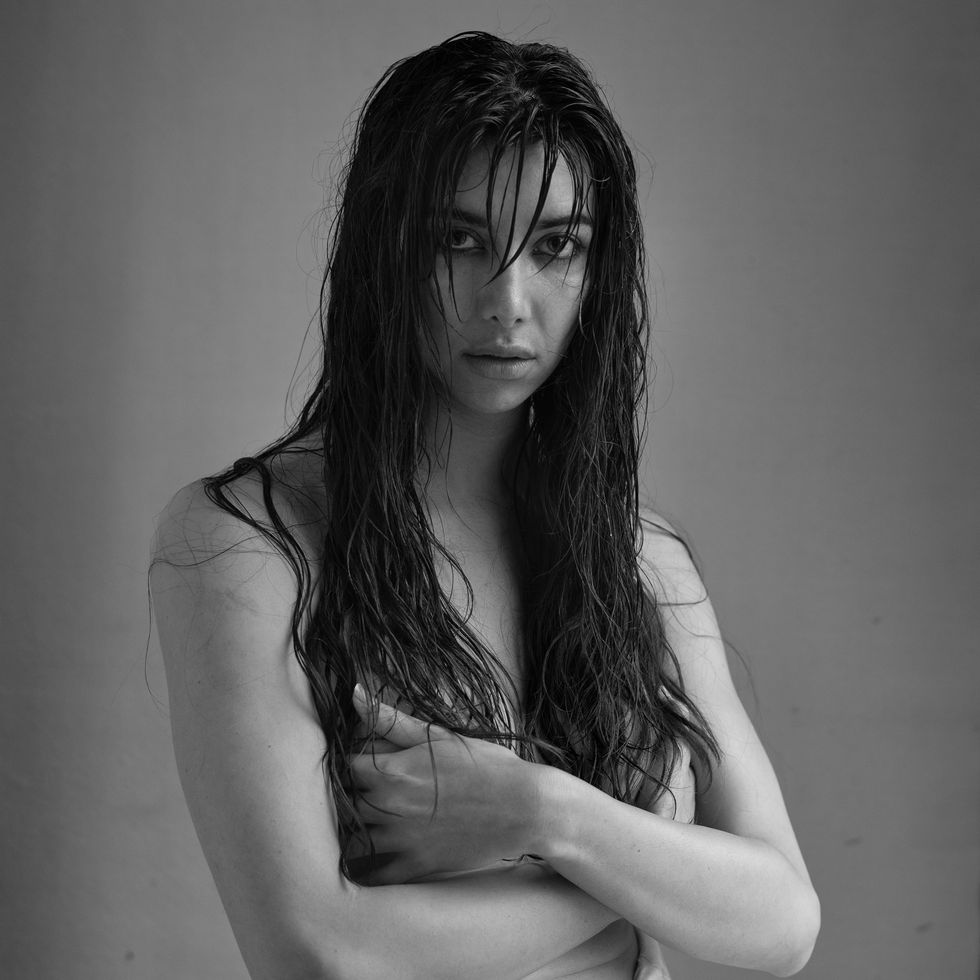
His show Bombshell at Mariposa in Los Angeles and its accompanying monograph was inspired by a test shoot where his friend and muse, Marcs, put on a va-va-voom wig and caused everyone on set to start shouting, “Bombshell! Bombshell!” What followed was a series of sittings where primped, teased and blown-out wigs became the jumping off point for models like Hari Nef, Connie Fleming, Martine Gutierrez, Sam Penn and Gabriella Karefa-Johnson to preen, mug and vamp in whole new ways.
Green’s style runs the gamut from hazy, frenetic polaroids to crisp black-and-white portraiture, resembling, by turns, cult photographers like Joyce Baronio and the ecstatic glee of early Richard Avedon. Avedon loved and identified with his models deeply, but through a scrim of professionalism and gentlemanly distance. Green has no such tension. The relation between himself and his subjects is 1:1, with photographer and sitter both clearly egging each other on. His own experience as a male model is no doubt a major engine and source of empathy. With each shoot, Green takes his typical studio set-up and allows his ladies to chew it up and spit it back out. Simple compositions are blurred into fist-fight clouds of hairspray, falsies and rivers of inky black mascara. The view from Green’s Chinatown studio is timeless New York: all exposed red brick and questionably sound fire escapes. Taken together with their mock ’60s styling, his models look like they’ve escaped from a lost Warhol film — down-and-out socialites on an extended glamour bender.
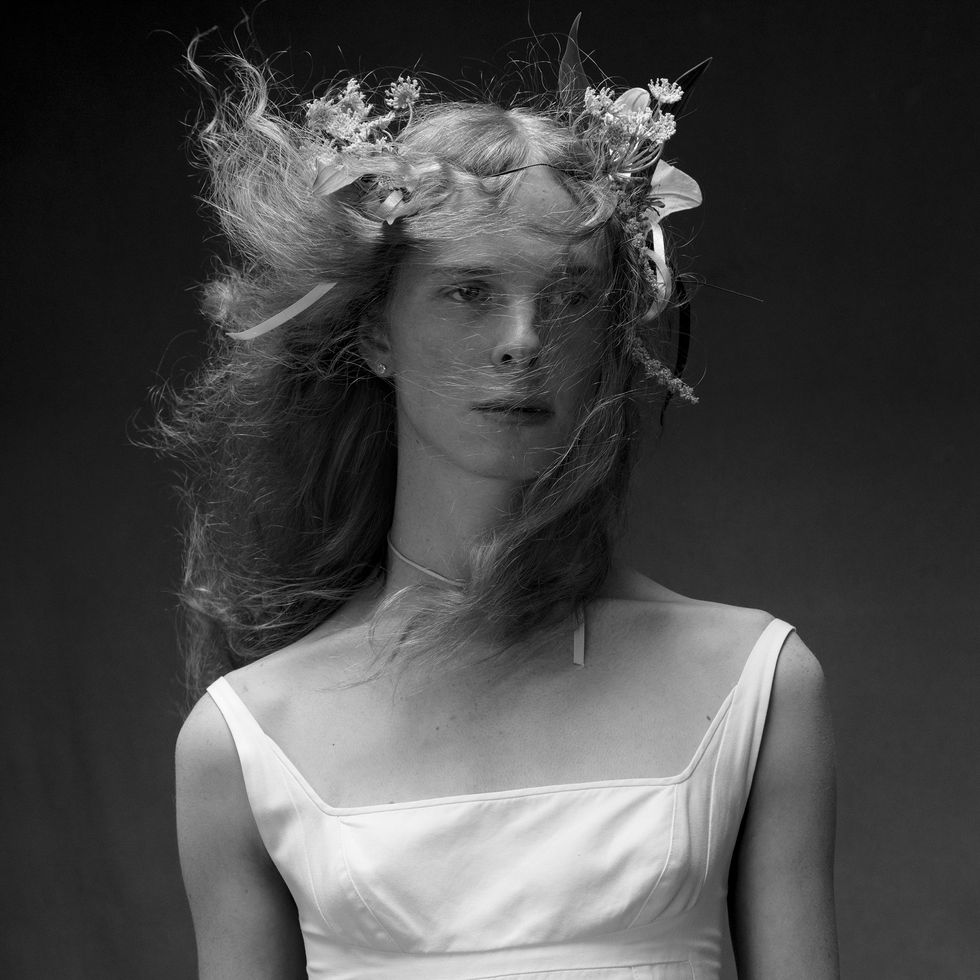
Everybody is game, but the models who throw themselves hardest into the idea of Bombshell yield the best results. The matter-of-fact nudity in “Molly” (2022) is at hilarious odds with her headboard-sized slab of windswept curls. “Gabriella” (2022) is all cascading hair and pure, luscious body. Interview fashion director Dara Allen stands out as Green’s ultimate MVP. Whether the occasion calls for swinging from light-posts, out-dazzling the Eiffel Tower or whipping pearls around her tits, time and again the woman proves herself to be utterly fearless. In photos like these, Green and Allen update the old fantasy together — a new, liberated life is only just a friend and a hairstyle away.
PAPER Spoke to Green about his influences and process for his exhibition and book.
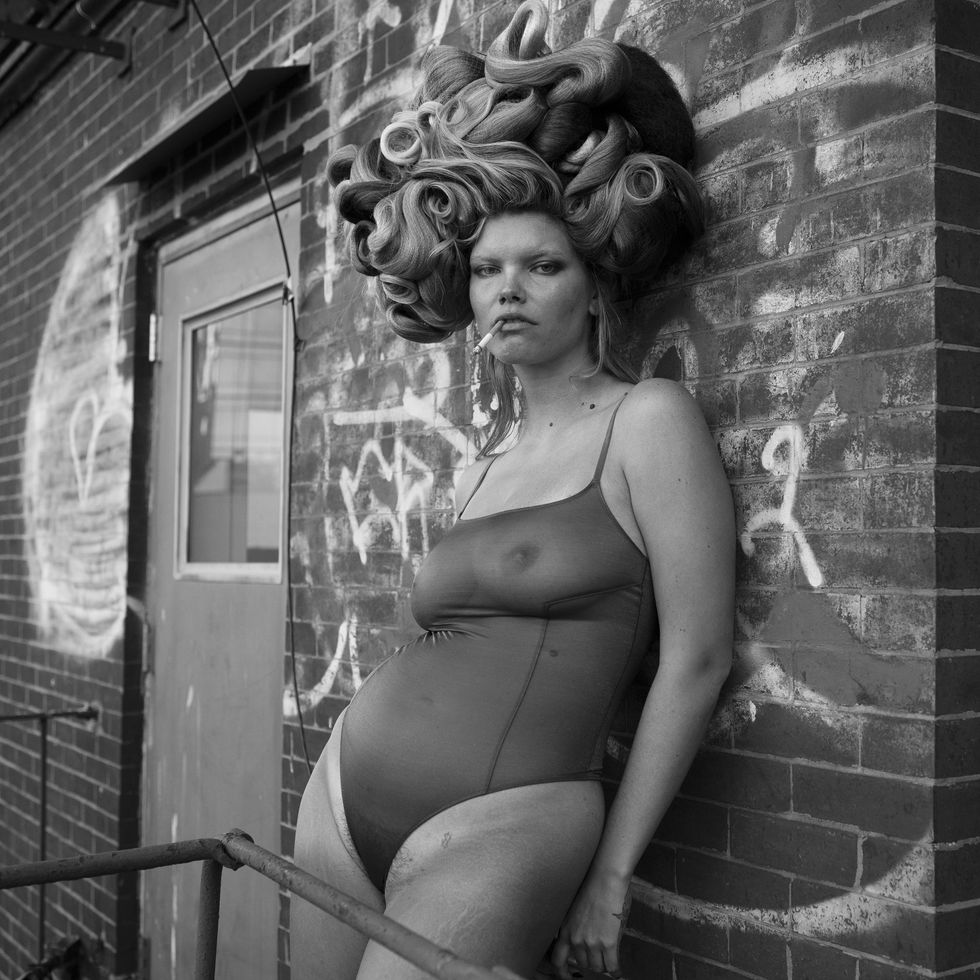
How did you arrive at the concept for Bombshell and how did you develop it out?
I started doing the project in 2021. I had hit this kind of lull in my career. Fashion portraits, editorial, that work just kind of stopped. It was a little crazy. I was just sitting in my space needing to do something and my friend Lucas Wilson, who's a hair stylist, approached me and was like, “Oh, let's do a hair play day with our friend Marcs at your studio," and I was like, "That sounds great.” It turned into this thing where Lucas was doing all these like crazy, big bombshell type wigs. We started shooting and all of us just kept on saying, "Bombshell, bombshell, bombshell," because Marcs was really giving a bombshell effect. Then the day ended and I had this rush that I used to get when I was shooting friends in the park for my first book, Young New York. There was kind of this equation of how to make these pictures. It was bringing in a hair artist collaborator, then finding friends and giving them the ability to create these characters with the hair artists. Everything landed in a great way. I worked on the project for probably a year and a half. We mainly were in New York and shot a lot of it in my studio in Chinatown. We did a trip upstate. I did a session in Barcelona. Then I went to Paris, and Dara was there and we did a little Eiffel Tower moment.
Apart from the initial hairstyle, did you research that concept anymore? Or was it a matter of, "We have the styling now, we just need models to make this idea come to life"?
It started as a hair project and it kind of remained a hair project, because hair is so “bombshell.” You got to have the hair, right? My friend Devan Diaz, who's one of the bombshells in the book and who also wrote the preface, had been obsessed with Marilyn probably a year before I started shooting the project. So that was a conversation that was going on with friends for a while. When we would have hang-outs, the conversation of how a wig can just completely transform someone and how it makes you feel like a different person [kept recurring]. So it was a pretty seamless evolution, and more like everyone diving into what we had been talking about.

Leading with friends as subjects is a pretty common thread that you see throughout so much of contemporary photography, which leads to this question of whether you're going to foreground that intimacy or if you're going to try something else altogether. Do you think of this series as being portraits of your friends or are they trying to channel characters or archetypes more?
I think it's portraits of my friends channeling archetypes. It's both, and so many of the people in Bombshell were also in Young New York. With my personal work, it is so much about collaboration with subjects and I guess there is a bit of a portrait mixed into that because it's who so many of these people are. With Young New York, it was the same thing: it was peoples' first week or month in the city and only knowing each other online before. And with that, people would bring a couple outfits, get a nice coffee and I'd see what they were most excited about, and then I would document it. This is kind of the same. It's just we have a hair artist, everyone's showing a little bit more skin, and we're not in the park. I have a studio now. It's a bit of a mix or a hybrid, maybe.
You're in a slightly unusual position, in that the kind of friends that you're calling upon are people who work in image-making either as stylists or performers or models. We know that they can all serve face like crazy, but how did you try to get them to be more spontaneous or try to show new angles of themselves?
I think there's a trust because there is this understanding of image-making and this passion for image-making. And I also like to show my friends where we're going. "Okay, this is the world we're in," or, "This is what it's looking like," and showing them the camera back. Hopefully you get a response that's positive. From there, the subject will usually begin to ask, "What if I tried this?" When you're working with someone who's a collaborator, you kind of build together. The black and white images are all digital, so it makes it so that you're truly building an image. I think when it's digital, it's kind of like illustration or something.
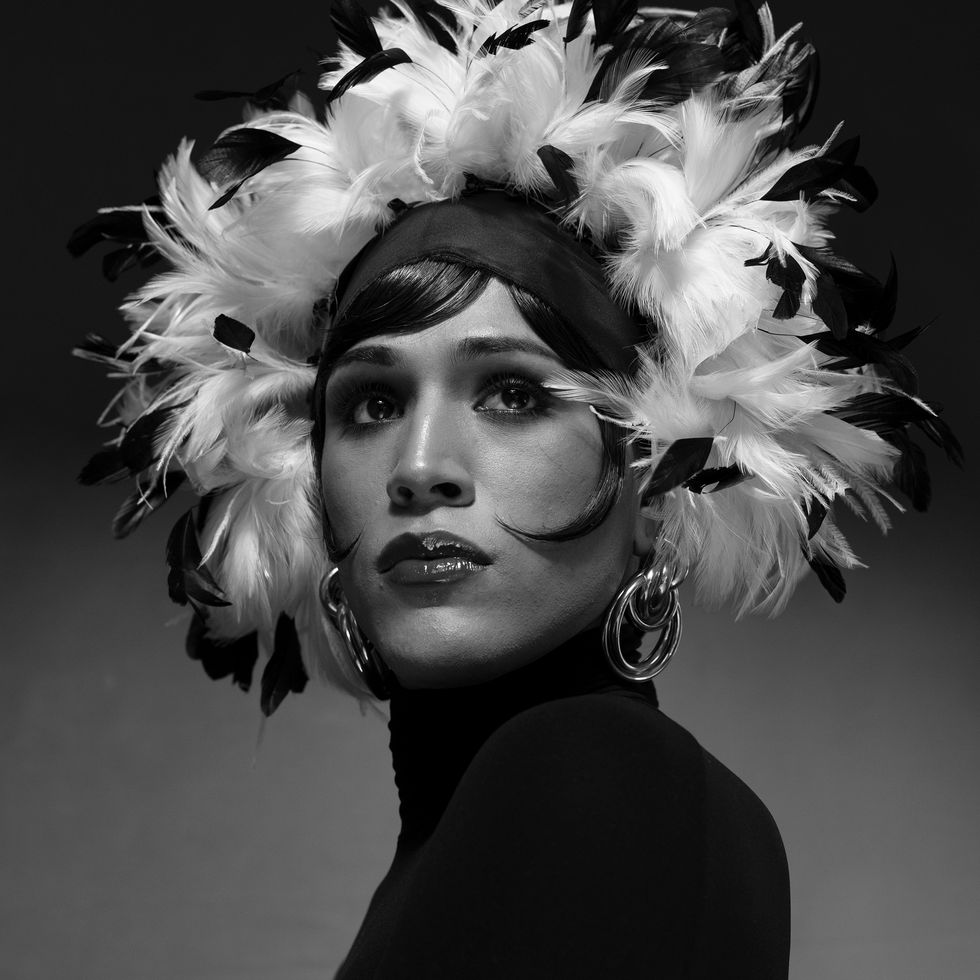
What is the difference between editorial versus personal work for you?
The big thing with editorial is there's deadlines. The majority of the work that I do now, it'll be a magazine or a brand asking if I'll shoot something and there's already a talent or stylist attached. It often has a short turnaround and you just have to move to the next thing, whereas with personal work, you can sit with it. The fact that I'm presenting pictures that I shot three, four years ago is not something that I get to experience much with my editorial work ever. And you're just doing it, and making the final decision. There's no compromise. There's no one that you have to really make happy except yourself. With personal work, I don't normally dive into it, unless I'm getting that rush again and it's not only like an excitement but there's an evolution happening with what I do. The personal [art] is this real opportunity to explore and create work that then becomes part of your foundation as a photographer.
Could you talk about the difference between shooting on location versus in the studio? What do you get from each set-up as a photographer?
You're gonna have more control in a studio, and on location there's a bit more of unknown that can pop up and things that you can respond to. With Bombshell it was all natural light, we were barely using reflectors or anything in my studio. You might have a cloudy day and the sun looks great in this corner. You go over there. If I'm going to a setting that I'm not at all the time you just have to be ready to be a bit more spontaneous and open to shooting something that maybe wasn't in your mind at all.

You have extensive experience in front of as well as behind the camera. How does that help you empathize with your subjects?
Being on the other side, you just have this understanding of things that make you feel a bit uncomfortable and things that you feel better, and usually the times that you've felt better, you do a better job. If you're on the model side and you're in a situation that just sucks, you don't want someone else to feel that way when you're the photographer. With this series, a lot of the people do work as photographers, stylists, set designers, creative directors. Basically every single role you can have on set, there's someone in this body of work that plays that role. So yeah, there is this understanding, and because it is friends and there is this respect from everyone's point of view, everyone's constantly on the same page. It's a very special and unique place to be.
Do you find it a challenge to get beautiful people to be anything but beautiful?
No. I think all my friends are so gorgeous and they're all so brilliant at the same time. People kind of assume if someone's beautiful, they have nothing else to offer.
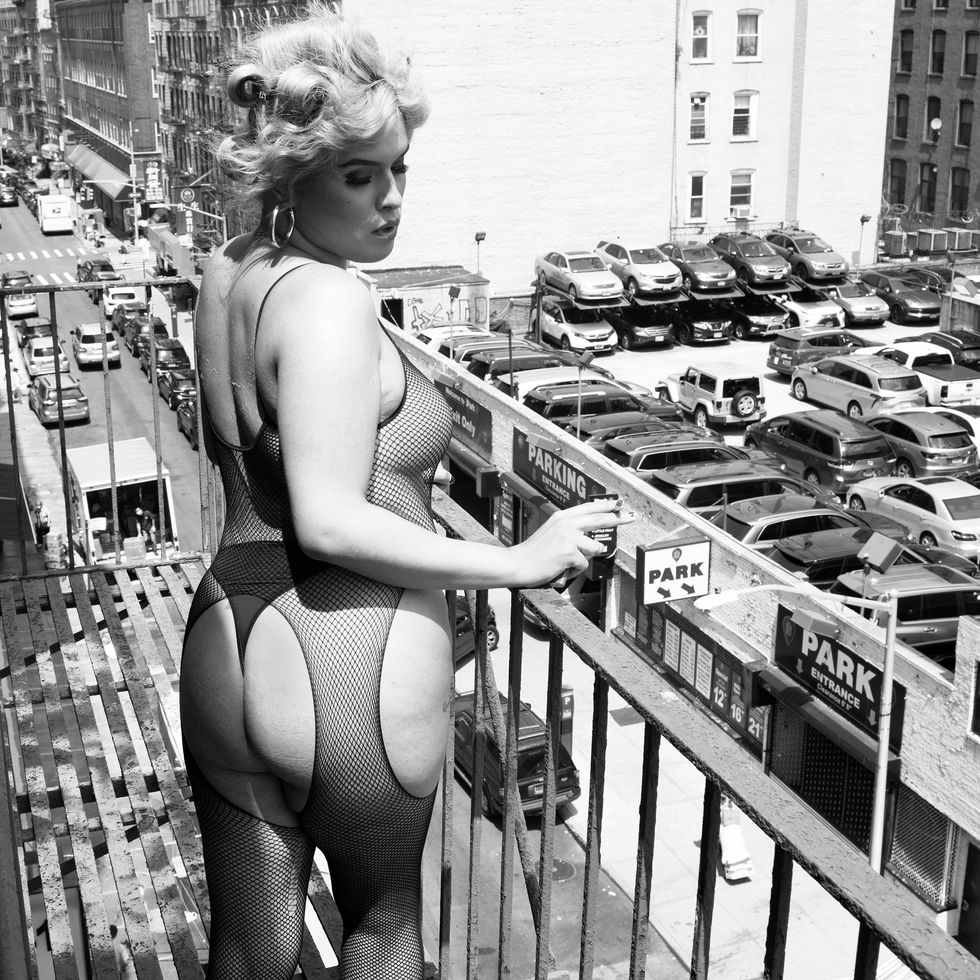
I have a friend who's a director and he told me about this funny experience of shooting a music video for a model-turned-singer. She was a little bit too aware of where the camera was at all times and constantly modeling in her head as she was performing. Did you have to kind of overcome any kind of self-consciousness like that or fill a therapist role?
When I was younger and modeling, I wanted to be part of the creative process. And if you're a young male model, people aren't coming to you for that. It's kind of like, “Okay, you're going to be here, you're going to do this thing." And I think a lot of my shoots weren't amazing when I was younger, because I was trying to control so much and there was too much of an awareness. It was funny, because once I started taking pictures, I wanted people to do the complete opposite of what I was doing as a model. It helped because I had to learn these tricks at the end of my modeling experience that I've been able to tell other people. As a photographer, I've continued to learn a lot more of what you can do to get that more authentic moment. I've probably learned much more about modeling, once I stopped modeling.
I saw that you had referenced the work of [cult photographer] Joyce Boronia, and I was wondering how she helped spark this body of work?
My agent, Jordan Hancock, actually gave me that book for my birthday years ago. It was all shot in her studio, and there was this use of light that was so different from what I had done in the past. I had started doing the series, and then I remembered the book, and I looked at it and was like, "My situation is kind of similar." I had just gotten my studio. It's in Chinatown and it has this very timeless New York rawness that you can't really find. It just landed in my lap. Looking at her book again I was like, “This is such a good reference point,” because I have the same tools with me right now. That body of work is gorgeous.
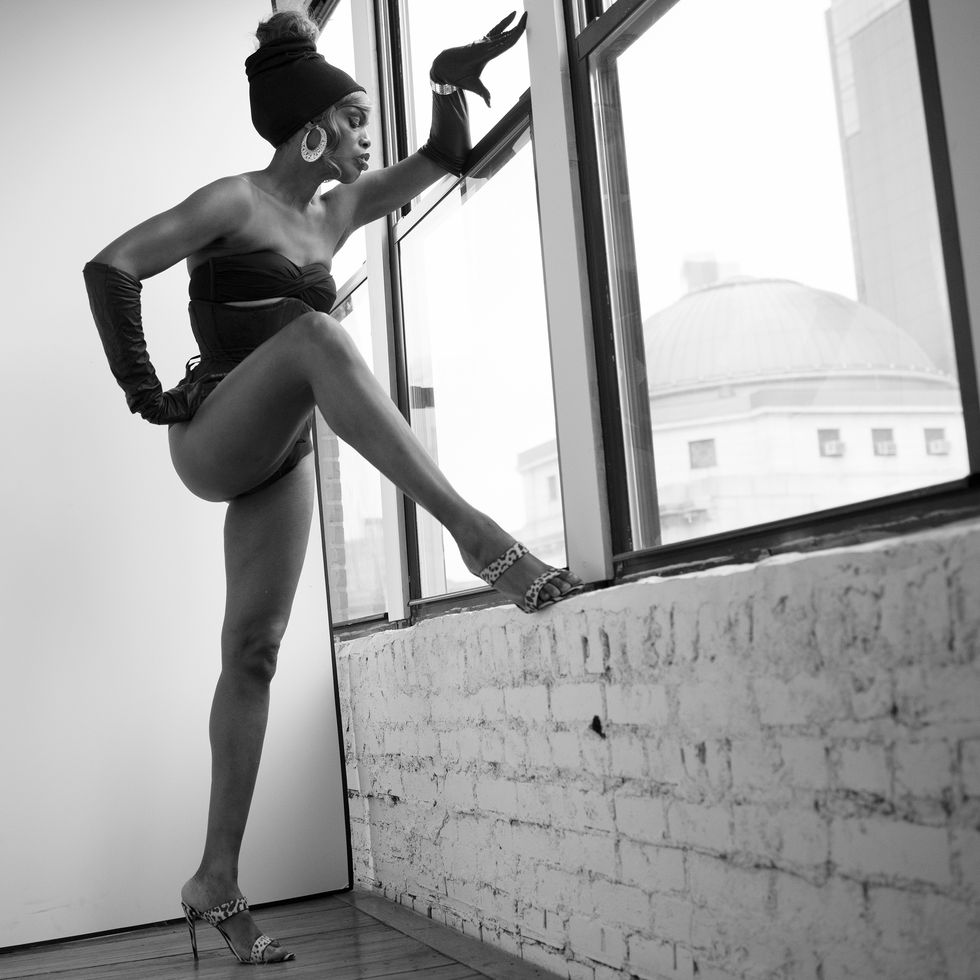
I'm always curious about how male photographers approach women as subjects. And especially because this series is so female dominated, what kind of sympathy do you have to have in order to kind of get that shot?
You just have to care about your subjects and recognize that you're working with a human being who's just like you and that they're giving you a lot. Especially if I'm doing a project like this, where people are showing a lot of themselves. You know, the fact that someone will strip down for me to do a project, that means a lot. That means someone's trusting me. That means that someone believes in my work. And I don't think you can take that lightly. Once a picture is taken, it's out there, it's done as a subject, you kind of lose all the ownership of it in a way, and then people are going to have their own perceptions of you in the future. You have to be okay with that. You've got to make that person feel safe, you've got to make that person feel appreciated. And I think that just shines through a picture.
Did you feel that people were pushing their limits for this particular series?
It's something that people wanted to explore with me. I had a few friends that said they didn't want to do it. And I'm not offended by that. I'm glad that you're honest with me and I don't want to photograph you in a situation that you're not wanting to be a part of. Like, what's the point? So the great thing about it was it's a lot of friends who want to investigate this subject with me, which is so exciting and fun. If it wasn't such a close group of friends it would be a little bit more different, and you'd have to be a little bit more delicate. But luckily, again, it's in my space where so many people have hung out throughout the years and created their own things. It's just a place where we'll go from hanging out to people putting on wigs, or people taking pictures, or people gagging at each other. So it's kind of been this nesting ground before the project started of that exploration and friend collaboration. It's always been there.
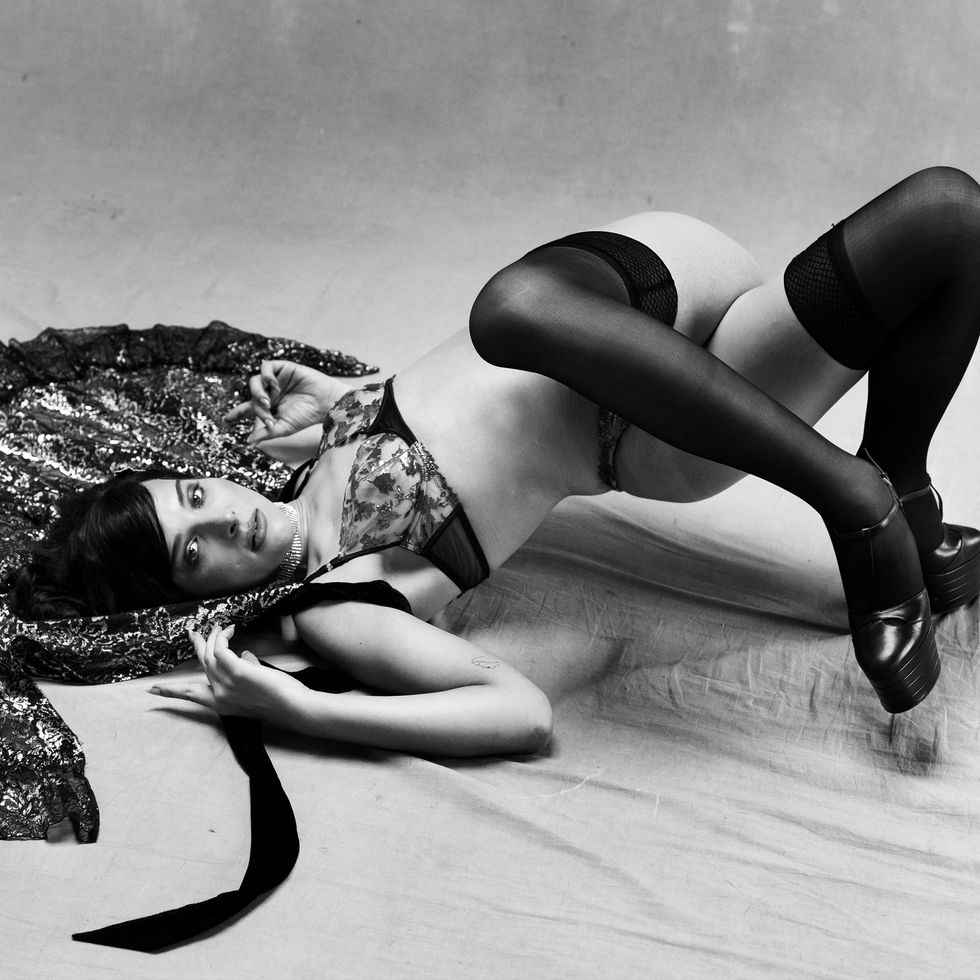
You've got to make that person feel safe, you've got to make that person feel appreciated. And I think that just shines through a picture.
Photography: Ethan James Green
From Your Site Articles
Related Articles Around the Web
MORE ON PAPER
Entertainment
Cynthia Erivo in Full Bloom
Photography by David LaChapelle / Story by Joan Summers / Styling by Jason Bolden / Makeup by Joanna Simkim / Nails by Shea Osei
Photography by David LaChapelle / Story by Joan Summers / Styling by Jason Bolden / Makeup by Joanna Simkim / Nails by Shea Osei
01 December
Entertainment
Rami Malek Is Certifiably Unserious
Story by Joan Summers / Photography by Adam Powell
Story by Joan Summers / Photography by Adam Powell
14 November
Music
Janelle Monáe, HalloQueen
Story by Ivan Guzman / Photography by Pol Kurucz/ Styling by Alexandra Mandelkorn/ Hair by Nikki Nelms/ Makeup by Sasha Glasser/ Nails by Juan Alvear/ Set design by Krystall Schott
Story by Ivan Guzman / Photography by Pol Kurucz/ Styling by Alexandra Mandelkorn/ Hair by Nikki Nelms/ Makeup by Sasha Glasser/ Nails by Juan Alvear/ Set design by Krystall Schott
27 October
Music
You Don’t Move Cardi B
Story by Erica Campbell / Photography by Jora Frantzis / Styling by Kollin Carter/ Hair by Tokyo Stylez/ Makeup by Erika LaPearl/ Nails by Coca Nguyen/ Set design by Allegra Peyton
Story by Erica Campbell / Photography by Jora Frantzis / Styling by Kollin Carter/ Hair by Tokyo Stylez/ Makeup by Erika LaPearl/ Nails by Coca Nguyen/ Set design by Allegra Peyton
14 October
Entertainment
Matthew McConaughey Found His Rhythm
Story by Joan Summers / Photography by Greg Swales / Styling by Angelina Cantu / Grooming by Kara Yoshimoto Bua
Story by Joan Summers / Photography by Greg Swales / Styling by Angelina Cantu / Grooming by Kara Yoshimoto Bua
30 September
